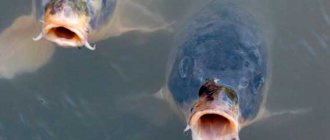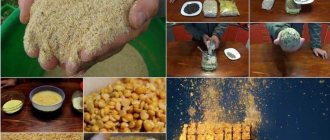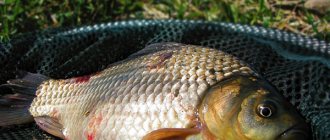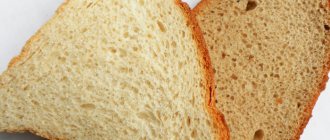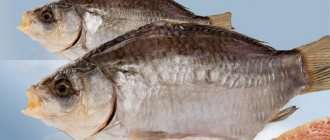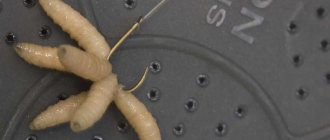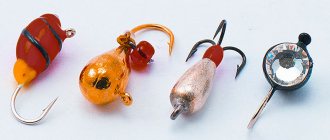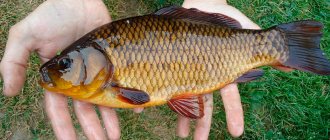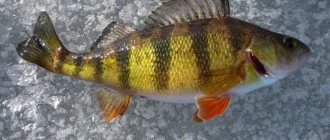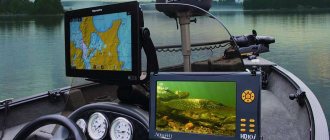Every self-respecting fisherman who is going to catch finicky crucian carp has modern bait in his arsenal. However, in contrast to them, traditional mixtures made independently work well. Experienced fishermen carefully guard the secrets of making food for crucian carp at home. This article is devoted to this direction – baiting for white fish. We'll tell you how to prepare bait for crucian carp. We will provide information about the characteristics of some components of the porridge. Let's pay attention to the most famous factory-prepared mixtures. Let's find out what kind of bait crucian carp likes. Let's look at the bait needed for each season. At the end of the article, we will summarize and draw conclusions.
Components of crucian carp bait
It consists of several parts, more precisely seven types, each of which has basic elements in its base. The seven components are:
- Fraction in the form of dust.
- Large elements.
- Components required for the bundle.
- Weights.
- Shock absorbers.
- Animal components.
- And floating particles.
Now we will go through each position and find out why these components are so important.
Mandatory components of bait.
- Dusty;
Dusting gradients that create a cloudy cloud of dust include: milk powder and semolina, which is added to the recipe: these are peas, corn and cereals. The absence of this position will not be able to hold the crucian carp for long. After all, he initially swims to the smell (dregs). As a result, there is no food.
- Large elements;
In order to attract white fish to the feeding table and keep them in one place for a long time, large particles are added.
- Components for the bundle;
The elements for binding all the components into a single whole are: breadcrumbs, waffle and biscuit crumbs, flour. The final mass can be airy for catching crucian carp with a feeder, or more compressed, sticky for creating bait balls.
- Heavy artillery;
Weights deliver food to the bottom of the reservoir, forming a table to which the fish are drawn. Too much air mixture may dissipate before reaching the bottom. And in the current it will be carried away from the place of intended fishing. If crucian carp is caught in stagnant water, soil is used as a weighting agent. Clay can be used as a weighting agent when fishing in the current.
- Shock absorbers;
You can add any flavor using activators. We're talking about garlic, caramel, chocolate and so on. Syrups, molasses, and natural ingredients—honey diluted in warm water—work effectively.
- Animal components;
Crucian carp eat them in spring and autumn, switching to a protein diet. He likes chopped worms, maggots, and bloodworms.
- Pop-up particles.
Having fed the bait into the lower layers of water, hitting the bottom, whole hemp and seed husks rush upward. This almost always works. The method is good when catching white fish using float tackle. Crucian carp on a float.
First, the fish hears the smell, then the food of different fractions works.
It is important not to feed the crucian carp right away, but to give out the food in portions, trying to keep it at the fishing point for as long as possible.
Which variety is better to choose for bait?
The variety of peas directly depends on the method, style of fishing and the reservoir. If it is used as bait on a hook, whole grains must be used. According to the observations of experienced fishermen, it is better to take wrinkled peas for bait, and smooth varieties should be avoided due to excessive boiliness.
If whole peas are used when fishing for peas, then cereals with refined grains are used when preparing bait. Crushed grains are used in the process of making mastyrka - this is a catchable bait, often used for catching large fish. Mastyrka is prepared with the addition of other cereals, we recommend adding millet, semolina, corn, etc. It is also permissible to use peas when fishing with a feeder; the feeder is filled with the mixture with peas. Fishing with a feeder is most effective for hunting bream.
Read more
Millet bait for fishing
If fresh peas are used, they require minimal cooking, and dry peas must be soaked first. Without lengthy cooking, canned peas are also used as bait. To reduce cooking time or if it is not possible to obtain fresh grains, frozen peas are used.
Preparing feed for crucian carp
You should be careful and know that bait for crucian carp is prepared in doses in the reservoir. And only after making sure that the mixture works, a large volume is prepared. Food for fishing with a fishing rod should be in the form of a dense ball, which, upon reaching the bottom, will gradually crumble. When fishing with a feeder, the density should be less. The mixes should come out of the feeder freely, forming a feeding table.
Every self-respecting fisherman has a recipe for making porridge for crucian carp. You can cook the same product in different ways, and it will work. Below are examples of the most common cereals and tasty mixtures for catching crucian carp, we recommend them.
Porridge When preparing porridge for bait, it is necessary to take into account the gradients, their weight, and the time it takes for them to brew.
The most common and easiest to prepare are pearl barley, semolina porridge, corn mixture, pea and wheat porridge. You can use breadcrumbs as a base.
Let's consider each type separately. Let's find out what needs to be put into the mixture and how long it takes to prepare.

Bait for crucian carp at home
Pearl barley
For this mixture we need 0/5 kg of pearl barley, which needs to be poured into a thermos, add one tablespoon of honey and pour boiling water over it. After the mixture has infused, which is at least 3 hours, everything is filtered, poured into a sieve, and laid out on a towel: the mixture should dry for some time. Then take 0.5 kg of breadcrumbs and crushed wheat cookies. Cocoa powder and crushed flax seeds can be used as a flavoring.
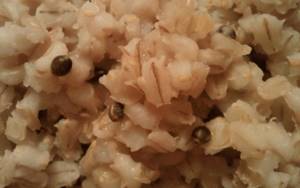
Barley for crucian carp with garlic
Semolina
To cook, you need 200 gr. breadcrumbs, the same amount of wheat flour and semolina. You need to add 100 grams of flour and crushed sweet cookies.
Pass everything through a blender, adding ¼ teaspoon of cinnamon. Place the product in cellophane. On a pond, make balls for casting, after adding the required amount of water from the reservoir where you will hunt for crucian carp.
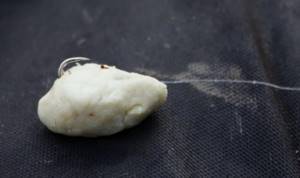
Semolina and garlic for catching white fish in summer
Corn
The product in question is thoroughly mixed with wheat flour in a 3/1 ratio. Water is added so that balls can be formed for casting. Take a saucepan, fill it with water, bring to a boil.
Place the balls in the water: cook for no more than 12 minutes. Remove the balls and allow time to cool. Let's pack and get ready to go fishing. If you want to use flavorings, we recommend adding dill or anise oil. Perhaps this is the best bait for insatiable crucian carp.
You need to add oil directly on the shore of the reservoir, before throwing the balls.
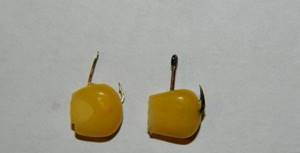
Simple nozzle - corn
Pea
Ingredients: 5 servings of boiled peas. One serving of crackers. They can be replaced with wheat breadcrumbs, or a mix can be made. 50:50. You will need five servings of sweet cookies and a little vegetable oil for flavor. Peas.
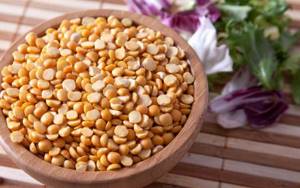
Peas
Wheat
This mixture contains one portion of breadcrumbs and ground roasted seeds. And also a portion of wheat bran.
Rusks as a base.
Breadcrumbs are added to almost all porridges. They act as a connecting link and impart a specific smell that white fish is attracted to.
A simple recipe is as follows:
- You will need to grind one kilogram of breadcrumbs and the same amount of oatmeal.
- If you have to fish in the current, you can add clay or soil from the river bank for viscosity. This way the bait will not immediately disintegrate.
- It is important to use water from the exact reservoir where you will be fishing for crucian carp.
You can use another recipe, but it is more complicated. Recipe No. 2:
- You will need to mix breadcrumbs - 500 grams, 300 grams. Bran and 200 grams of seeds.
- Pass all ingredients through a mixer or blender.
- Stir the finished mixture in warm water, after adding a couple of tablespoons of honey. When the honey dissolves, gradually pour bait into the water.
Note!
The consistency of the product should be viscous with the ability to form dense balls.
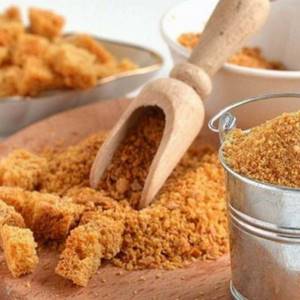
Crackers
How to prepare peas for bait
Before you start cooking, you need to choose the right legumes, following the basic rules:
- Peas should be clean and free of bugs or other pests. In order to minimize the possibility of insects, it is recommended to buy planting seeds of this crop, which are packaged in sealed bags.
- Peas can be shelled or not (brain). For fishing, exclusively the second option is used, since in this case cracking will not occur during cooking or soaking.
- The selected grains must be whole. Half the peas will not interest the fish, and putting them on the hook is quite a labor-intensive task.
Did you know? The level of smell of crucian carp is in no way inferior to that of a shark
-
they are able to find food in water based on just a few molecules.
After choosing the optimal product, you can proceed directly to cooking. In order for the vegetable to retain its original shape, plasticity and intact shell after heat treatment, several recommendations should be followed:
- Before cooking, peas must be soaked, and the volume of water must be greater than the volume of the main product, at least 4 times;
- Soda will help speed up the soaking process, which should be added at the rate of 1 tsp. per 1 liter of water (the solution must be changed before cooking, otherwise the peas will boil);
- To enhance the aroma of peas during cooking, you can add milk or vegetable oil;
- To avoid destruction of the skin during cooking, do not stir the peas;
- If cooking in a pressure cooker, the cooking time can be reduced to 1 hour, but to prevent the skins from separating, the peas should be placed in a gauze or cloth bag.

Many fishermen replace the rather labor-intensive and lengthy process of preparing boiled peas with an easier one. There are several ways to steam peas, but the simplest of them will require the following steps:
- Pour 2 tbsp into a 2 liter thermos. legumes
- Add 1 tsp there. soda
- Pour boiling water over everything.
Important! Due to the whimsical nature of crucian carp, on some days it may show complete indifference to the specified baits. In this case, experienced fishermen always have other baits with them (including those of animal origin).
At the same time, not all cooked peas will be soft enough, but all grains are guaranteed to retain their integrity and intact skin. In the future, such bait can be stored in damp fabric bags.
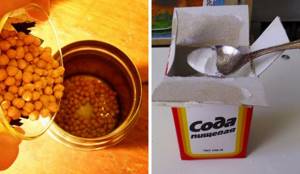
During the steaming process, it is permissible to add any flavoring to the peas, for example, anise, sunflower or hemp oil, etc.
Pea dough
Pea dough is often used as bait when fishing for crucian carp. To prepare it you will need:
- Boil 100 g of any (including half) peas, then mash them with a masher until a homogeneous mass is obtained.
- Mix the resulting porridge with oatmeal. In this case, the amount of rolled oats should be 2 times less than peas.
- When kneading the dough, you can add a little flour according to your eye.
- Roll out the flatbread and fry it in a frying pan with the addition of sunflower oil.
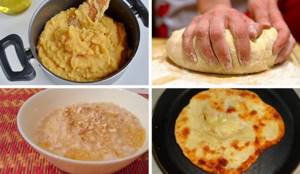
You can also use pea flour for these purposes, which is easy to find in specialized fishing stores. Here it is sold as a mixture with various flavors, packaged in small bags. To prepare the dough, just add water.
Pay attention to the description, characteristics and fishing of silver crucian carp.
There are also slightly more complicated versions of the recipes. For example:
- Pea and wheat flour are mixed in a 1:1 ratio.
- Add 1 egg and water, then knead the dough.
- The resulting mass is immersed in boiling water, holding it there for 2–3 minutes.
- After cooling, the finished product is wrapped in gauze for storage.
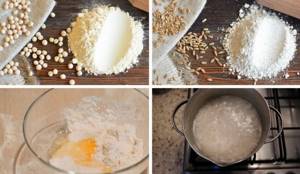
Whole peas
The easiest way to cook peas is to use one of the basic recipes:
- The beans should be poured into a colander and rinsed thoroughly under running water. Next, they should be filled with water and soaked for 24 hours. After this, the container with peas must be placed on low heat and cooked until tender: the structure should become soft, but the peas themselves should not be boiled.
- The pre-soaked product should be poured with cold water and brought to a boil, then removed from the heat and cooled. Next, place the container in a water bath and cook in this way for 2 hours.
- The soaked peas must be poured into a fabric or nylon bag and then tied. After this, place it in a pan with cold water and secure it to the handle of the container so that the bag does not touch the bottom. Then the pan should be placed on low heat and covered with a lid. Cooking time directly depends on the variety of peas chosen and can vary from 20 minutes to 2 hours.
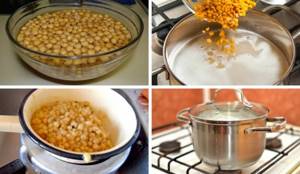
After cooking, the peas are sorted out and those that are suitable are sent to dry on spread paper or cloth.
Cooking errors
When preparing some kind of mixture, ignoring technology, fishermen often make mistakes that can negatively affect the result of fishing. If the feeding is prepared incorrectly, the fish will not stay long on the feeding table and will leave. As a result, you will be upset and left without credits. Let's look at the typical mistakes of beginners:
- The mixture does not include a large fraction, then you should not hope to catch a trophy crucian carp. Be sure not to ground grains, worms, or maggots.
- Try not to overfeed white fish. Serve in measured portions. Take into account the fact that animal bait and the absence of components in the mixture that accelerate the digestion process will quickly saturate the fish and they will lose interest in the working point.
- A lot of moisture is bad. Water from the reservoir must be added gradually, constantly stirring the mixture. Take breaks. Let the product brew, if necessary, continue to add water in doses. You need to find a middle ground: the viscous mixture will not crumble along the bottom. Will not wash out of the feeder. A ball that is too dense (dry) breaks up early when it hits the water and does not create a clear bait spot.
- Keep track of the amount of attractants used. If you overdo it, you will get sharp, strong odors that can scare away fish. It is necessary to create harmony in which attractants do not interrupt other odors.
Use of animal supplements. They are necessary when fishing in cold water. When the water is warm, you can not use them, or reduce them to a minimum.
Pea bait for crucian carp
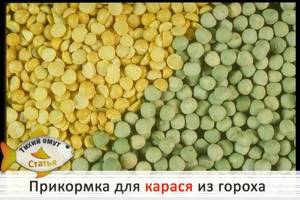
But speaking about the omnivorousness and unpretentiousness of crucian carp, we must not forget how capricious and finicky it can sometimes be. It would seem that there are about a dozen baits and baits, everything is fresh, aromatic and should whet the appetite of this fat guy. But alas. There are no bites, although it is known for sure about the presence of a fishing object in the reservoir or even the fishing place itself. What is this? Cunning? Caprice? Weather influences?
I won’t lie if I say that I have no idea why crucian carp is so often capricious and responds to the most seemingly unthinkable and unexpected baits. But there is another crucian carp. Gourmet and glutton. This one almost always bites on one single bait - pea porridge.
Features of some types of porridge
There are porridges made according to the classic recipe. There are products with “pepper.” Unusual additives that occupy a special place in the arsenal of experienced fishermen. One of these recipes, especially for you, is located below.
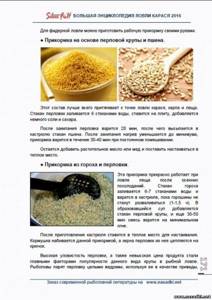
Excerpt from the encyclopedia of crucian carp fishing
Salapin porridge for fishing
The Salapinsky recipe for porridge for white fish includes the following components:
- One part of pearl barley porridge, which is boiled in water;
- Whole millet – 2 parts;
- Corn grits 4 parts. It can be replaced with a barley analogue.
- This is all diluted with water: nine parts;
- Vanilla is added as a flavoring agent in an amount of 5 grams.
Barley is cooked over medium heat. 5 minutes before readiness, add millet and cereal to the porridge. Next, the mixture is cooked for another 10 minutes and vanilla is added. The porridge is ready when the grains burst. The finished broth must be mixed; you don’t have to strain it.
The mixture is set aside: it should cool and brew in a covered pan. This will take 2-3 hours.
Porridge for catching crucian carp with a spring
When preparing equipment for a feeder, you need to take into account the nuances. The mixture should not be dusty or airy. Otherwise, she will quickly leave the cage during casting. The composition includes the following gradients:
- 200 grams of wheat cereal.
- The same amount of pearl barley and breadcrumbs.
- 300 grams of fish feed.
- 200 grams of crushed peas.
- Sunflower cake in the amount of 200 grams is added as a flavoring.
When preparing porridge, you need to cook all the components separately until cooked. Then, let them cool and only then mix.
Water is added in portions immediately before fishing in the pond. The mixture is infused: the process is repeated until the product is completely ready.
Method for preparing pea porridge
Actually, we cook the peas until they become mushy. This is the main thing, but it is there. of course, and but. How to do this so that the porridge does not burn while it is “ready”?
Very simple. Using a large pan of boiling water, place a smaller pan so that the bottom of the small pan does not touch the bottom of the large one. In the small one there are peas in the form in which they are usually put on gas. that is, flooded with water. Cover the smaller pan with a lid and steam until the peas are completely boiled. The first stage has been successfully completed. This is called a water bath.
Next, wipe the finished porridge through a colander. To do this, you can use a regular potato masher, in other words, a potato masher. Mix the porridge obtained as a result of this kneading with a small amount of semolina. Semolina is needed to thicken the porridge. But there is one important nuance: there should be enough semolina so that the finished porridge slightly sticks to your hands. By morning, the porridge, placed in the refrigerator in a plastic bag, will reach the consistency necessary for successful fishing.
The best additive is garlic
The aroma of garlic works all year round. This could be an attractant or product particles. Photo: garlic for white fish: the result exceeds all expectations.
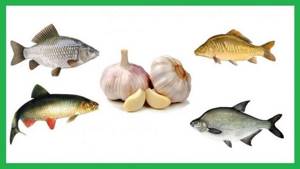
Garlic for white fish: the result exceeds all expectations
By spraying the garlic mixture from a can onto the pearl barley grain, we get a persistent and attractive smell that suits the fish. At home, the attractant is prepared as follows:
- You need to take 2 cloves of garlic.
- Pour 50 grams of vegetable oil over them.
- Leave in a cool place (preferably in the refrigerator) for two days.
This liquid can be stored for a long time, periodically taking it fishing.
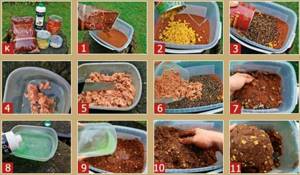
Stages of preparing bait
Method of placing peas on a hook
Peas are such a bait that if you put them on the hook incorrectly, they will immediately fly off. As far as we know, each pea consists of 2 parts (halves). The hook must penetrate both halves, then the pea will be securely held on the hook. If the hook is inserted between two halves or at an angle. It will either fly off immediately or after a while. Depending on the size of the hook, plant one or several peas at a time.
At the same time, it is better to leave the hook tip open so that an effective hook can be made. When fishing for carp, a different type of fishing gear is used. At the same time, peas are strung on thin hair in the form of a garland.
Groundbaits by season
Crucian carp is a cunning and picky fish, it eats a varied diet. The fishing season and the characteristics associated with each period should be taken into account. Even one month can differ from another in its nuances.
In summer
To prepare summer bait, you need to take one kilogram of yellow peas, 200 grams (a glass) of breadcrumbs. Shortbread cookies passed through a meat grinder 4 pcs. One tablespoon of cocoa and a glass of flour.
Initially, peas are cooked. Cookies, crackers, flour, cocoa are added to it. The resulting mixture, after it has cooled, is packaged in bags. On the shore, the composition in the bags is diluted with river water. The mixture needs to swell a little. This may take 20-30 minutes. Balls are rolling. You can catch crucian carp using a float rod or by pressing a feeder feeder.
What to feed in spring
Spring food for catching white fish differs from summer food in its simplicity. To prepare you will need 1 kilogram of millet and dung worms. The millet is boiled, chopped worms are added. This is all thoroughly mixed. You can go fishing. Bait for crucian carp in spring works well in shallow water. At this time, you can most often find crucian carp there.
What to feed in the fall
When the water temperature drops, fish activity decreases: crucian carp switches to animal products. Taking into account the nuances in the behavior of fish, the bait is prepared as follows:
- You need to take 200 grams of roasted seeds.
- 500 grams of breadcrumbs.
- Mix the gradients.
- Add chopped worms, maggots, bloodworms.
- A little vanilla.
- Moisten and mix thoroughly.
This mixture will always attract crucian carp to the dinner table. Photo: no comments - everything you need for successful fishing for white fish in the fall.
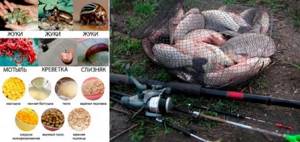
No comments - everything you need for successful fishing for white fish in the fall
Bait and bait supply
In general, if you make allowances for some of the features of this type of fishing, then everything is simple. Firstly, we remember the law: what we feed is what we catch. In our case, everything is exactly the opposite. What do we catch? That's what we try to feed. We cook peas for bait in almost the same way. just like we cooked it to make porridge for fishing, but slightly, so to speak, undercooked. This is done so that our bait still contains whole peas or their halves. Part of the porridge, therefore, when it gets into the water, will turn into a cloud of turbidity, and part will settle in the form of feeding grains. We do not add anything to the finished peas. except, perhaps, a small amount of the same semolina, for dregs.
When fishing, it doesn’t matter whether we fish with a float or a feeder, we throw our thin and slightly watery bait into the fishing spot like this. to create a rich and dense bait spot. We throw it without regret - after all, most of it is dregs, and the crucian carp will not eat it and will not get enough of it, it will only “work up” its appetite.
You can experiment with one very interesting addition to porridge - powdered milk for babies. The main thing is to choose something simple, without special additives, etc. We add the mixture to the porridge immediately before feeding, because it sours very quickly, especially in the heat.
Having tried this additive for the first time, I was sure that I would scare away all the fish, but within an hour the cage had become heavier by a good kilogram of good crucian carp, and the subsequent hours were generally remembered vaguely. I fished and fished and fished... After four hours of fishing (previously there had been no bite for several hours since early morning) I found an almost full fish tank in the water. I had to think about the catch rate and reel in my fishing rods. After this, if you plan to go crucian fishing, you always have powdered baby milk with you. It worked in different ways, sometimes better, sometimes worse. I will say one thing: I never scared the fish away, just the opposite.
How to properly feed crucian carp
Having collected all the components together, mixed them, adding attractants, you need to feed the intended place: serve the finished mixture on the feeding table.
The location has certain requirements. It must be flowable. This will help attract crucian carp from a distant position. If you fish in a closed reservoir, then the most intense (invisible) current will always be in the center or near the dam.
The bottom of the target point should be level. Before fishing, it is determined using a marker float, a fishing rod, or by dragging a sinker along the bottom with a feeder.
What kind of fish can be caught with peas?
Almost all cyprinids prefer peas, such as:
- Ide . This fish bites on peas almost the whole summer, starting from May and until the beginning of September, when the water level in reservoirs is most optimal. The ide is a cautious and cunning fish that prefers to be in holes or near shelters, which can be trees fallen into the water. Quite often, weighty specimens are found within such places. The ide is most active in cloudy, rainy weather.
- Carp . Chickpeas are a type of pea and carp simply adores them. Chickpea seeds are larger and more flexible. Very often, various flavorings are added to chickpeas. The carp bites most actively in the spring, as well as at the beginning of summer. Larger individuals choose quiet areas of the water area, where there are thickets of aquatic vegetation and a lot of snags.
- Bream . This fish prefers regular peas prepared by steaming rather than boiling. During the process of steaming the nozzle, aromatic substances are added to the peas, such as: anise; honey; cake; vanillin.
- Carp . Starting from the second half of summer, carp begin to be actively caught on peas. This period can last until the end of autumn. Carp can be caught using peas both with a regular float rod and with a feeder. At the same time, carp may prefer canned peas, although this bait attracts a lot of “trifles”, and it does not hold well on the hook.
Store-bought bait versus homemade mixture
Comparing both types, we can say that the product made independently is of higher quality. However, its preparation takes a long time.
In terms of time spent per unit of product, store-bought mixtures give a 100% head start. By analyzing the bait into its individual components, the following results: the fisherman overpays by 2 times.
Today, the baits offered by stores have reached a new level of quality. Large manufacturers have their own laboratories where components are tested. Therefore, to say that store-bought bait for crucian carp does not work is absurd.
Before the fish spawn and in mid-summer, homemade mixtures work well. Many people use chaff as a filler. In early autumn, homemade and store-bought fish work well when preparing white fish for hibernation. During this period, you need to focus on protein foods.
Useful video - “Pea porridge - a mask for nipples, springs, feeders for crucian carp”
Mastyrka for crucian carp is prepared from peas, pearl barley and millet, as well as other cereals, and is flavored with chocolate, honey or cinnamon, as well as anise. The main thing is not to overdo it with the intensity of the smell, because a strong smell can scare away fish, especially in early autumn or spring. To make the bait even more attractive, you can paint it gold or pink. To prepare mastyrka for crucian carp, you need:
- Soak the peas and boil them with pearl barley, semolina and millet. All these ingredients are taken in equal parts and kept on fire until completely boiled.
- The homogeneous mass obtained as a result of such cooking is passed through a rigid sieve, mixed and kneaded.
- A little suitable flavoring is added to the mixture.
- The future mastyrka is mixed and the desired dye is added to it.
- The liquid dough-like mass is brought to a more viscous consistency by adding semolina or wheat flour.
- Final mixing, forming balls, packaging the finished nozzle.
Well. let's say. the reader will say, I made the bait of the required density, I use the most sensitive tackle, then what? There are no bites. and the hook is always empty.
Next, you should understand the peculiarities of biting crucian carp. You should not expect any pull to the side or laying out of the float. Most often, a bite means the float rises a few centimeters. If there is no bite at this moment, the hook turns out to be empty. It is especially difficult to catch in a wave, even a small one.
Most anglers I know who successfully fish with porridge use fairly long spindle-shaped floats with antennas, painted with bright transverse stripes. The brighter and more contrasting the stripes, the greater the visibility, and, therefore, the more bites will be noticed and implemented.
The float can be unloaded at your own discretion, but you should remember. that fishing in the vast majority of cases occurs from the bottom. That is, nothing bad will happen if the sinker is slightly heavier than the carrying capacity of the float. The main thing is that it is sliding and creates a minimum of resistance when biting carefully.
There are two leashes on one fishing rod. One is about five centimeters long, the other is slightly longer - five to seven centimeters. This is convenient when crucian carp is capricious and its preferences can change within a few hours.
Now the best bait is peas, and after an hour and a half, give him semolina. In addition, two hooks on one tackle increase its effectiveness. Even if the bait from one hook is imperceptibly eaten or torn off during casting, the other one will protect it.
For myself, I came up with equipment that works on a different principle. Any bite, be it a bite “on the rise” or a pull to the side, leads to the fact that the float hides under water. It's very simple and... I don't think it was invented by me. But I haven’t seen this myself, and therefore we can say that I came up with it for specific fishing conditions.
A fairly large lead olive, two grams more than what is required for proper loading of the float, slides freely along the fishing line, below the olive there is a breaker bead, a swivel, and heads with hooks.
We invite you to familiarize yourself with: Do-it-yourself winter bait for roach: bait recipes
Everything was conceived in such a way that the float, due to the slipping of the fishing line through the olive, would always, even if it bites “on the rise”, would be immersed in the water. The olive lies motionless on the bottom, without alerting the fish. There are no restrictions on the olive.
With such gear, the bite is more visible - it’s not a rise of a few centimeters, but a sinking. Even on a wave it is easier to notice it in time. Pea porridge is a powerful assistant in the hunt for capricious crucian carp. The main thing is to approach fishing consciously and experiment more, choosing exactly what you want. which will give a stable result.
Based on materials from the site “All about fishing”
